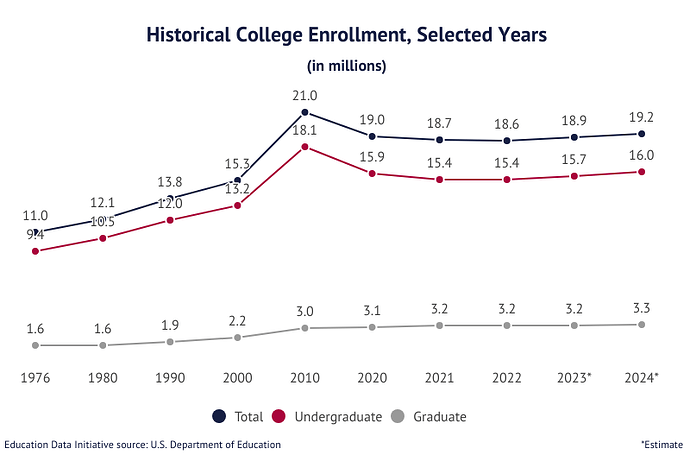No matter the study - whether or not you believe the methodology, they all pretty much show the same.
Are they kids or retirees or families, etc. - I don’t know. But all studies show similar - the Carolinas clean up, Tennessee, Texas, Florida, Atlanta (GA if you will).
I’m just one industry but Toyota left Los Angeles for Dallas, Nissan Los Angeles for TN, Mitsubishi Los Angeles to Tennessee, VW Michigan for VA (DC area), Mercedes NJ to Atlanta and is in the process of leaving its Detroit offices for Atlanta (per auto news). Porsche is in Atlanta. New Ford plants in KY and TN. Hyundai is already in Alabama and is opening a big plant near Savannah.
Alliance Bernstein moved NYC to Nashville. Goldman moved a lot to Texas.
In the end, where jobs go, ultimately people will move - so today’s kids won’t have a choice.
I didn’t have a choice - I’m in TN because my job moved here. Well I had a choice but I wanted to work.
Top 10 cities with the highest number of move-ins includes:
- Myrtle Beach, South Carolina - Wilmington, North Carolina (1st in 2024)
- Ocala, Florida (2nd in 2024)
- Raleigh, North Carolina (6th in 2024)
- Greenville-Spartanburg, South Carolina (4th in 2024)
- Dallas-Fort Worth, Texas (unranked in 2024)
- Charlotte, North Carolina (5th in 2024)
- Boise, Idaho (11th in 2024)
- Knoxville, Tennessee (8th in 2024)
- Nashville, Tennessee (13th in 2024)
- Jacksonville, Florida (9th in 2024)
In contrast, California took three of the top 10 most moved from cities. “The Northeast and West Coast continue to see a steady increase in people moving out likely due to high costs of living, overcrowding, and spiking insurance premiums, among other factors,” says Schwartz. “As economic uncertainty persists and the housing market remains tight, we anticipate a continued migration toward more affordable and emerging markets throughout the country.”
The top four areas with the most move-outs, along with those at numbers six and seven, remain unchanged from 2024, PODS found.
Personal anecdotes are nice and yes, the headline says kids and I presume it’s meant to be college students as a kid might be perceived as a 25 year old but one only needs to look at census data to know the country has shifted Southward. Will it continue with the political situation - don’t know - but the data is far beyond anecdotal.
by the way - In N Out Burger from all the West Coast lovers - first outside of CA HQ is about 10 minutes from me in Franklin TN. For now, it’s regional. But the owner is moving here. I’m sure the HQ will eventually too.
Top 10 cities with the highest number of move-outs includes:
- Los Angeles, California (1st in 2024)
- Northern California (San Francisco area) (2nd in 2024)
- South Florida (Miami area) (3rd in 2024)
- Long Island, New York (Serving parts of NYC) (4th in 2024)
- San Diego, California (8th in 2024)
- Central Jersey, New Jersey (6th in 2024)
- Chicago, Illinois (7th in 2024)
- Boston, Massachusetts (13th in 2024)
- Hudson Valley, New York (10th in 2024)
- Denver, Colorado (12th in 2024)
Top 10 Cities People are Moving To (and Move Away From) - Structural Building Components Association

